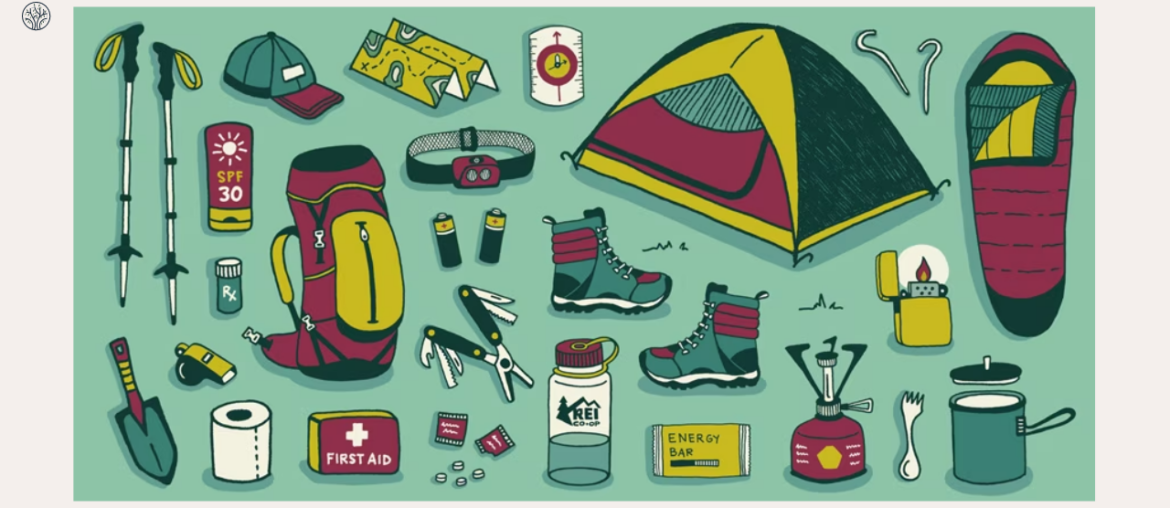We are back with the second episode of the Backpacking series. In this article, you will find an essential backpacking gear checklist that covers everything you need for your trip. Also, we have some tips and resources to help you have a joyful and well-equipped adventure.
But before starting, let’s explore the 20% rule and the big 3 items in backpacking.
What Is The 20% Rule For Backpacking?
The 20% rule is a general guideline that suggests that your backpack should weigh less than 20% of your body weight. For example, if you weigh 150 pounds, your bag should weigh less than 30 pounds.
This rule is from the idea that carrying a lighter pack will make your hike easier and more enjoyable, as well as reduce the risk of injury and fatigue.
However, the 20% rule is not a strict rule that applies to everyone and every situation. Each backpacker will adjust what to pack for backpacking depending on their fitness level, experience, terrain, weather, and personal preferences.
The best way to know how much weight you can comfortably carry is to test your pack before your trip, either by hiking with it or by using a scale.
Further, adjust your pack weight according to your trip length, as you will need more food and water for longer trips.
What Are The Big 3 Items In Backpacking?
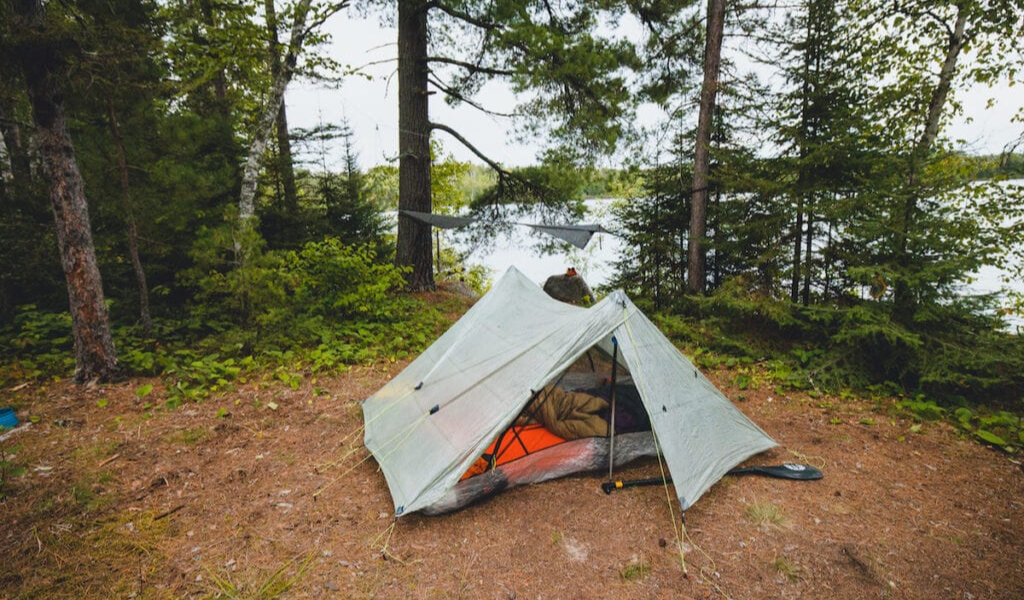
They are the three heaviest and most essential pieces of gear that you need for your trip: backpack, tent, and sleeping bag. These items make up a significant portion of your pack weight, so choose them wisely.
Here are some factors to consider when choosing these essential items:
- Backpack: Your option should be comfortable, durable, and adjustable to fit your body shape and size. Ensure its padded straps, hip belt, load lifters, frame, pockets, etc., suit your needs. Our advice is to choose a 40 to 60 liters backpack for an overnight backpack list and 60 to 80 liters for longer trips.
- Tent: A good tent is easy to set up and take down, as well as sturdy and weatherproof. You should consider various features, including poles, stakes, flysheet, footprint, etc. Generally, lighter tents tend to be more costly but also more convenient, so make your choice.
- Sleeping bag: When choosing this gear, consider one with the right balance – warm enough for a comfy night’s sleep without making you too hot. It should feel snug and soft and let you breathe easily for better rest. Look at its shape, size, filling, shell, lining, zipper, and more to match your preferences.
Ultimate Backpacking Gear Checklist
Besides the main three items above, there are other things that are useful and enjoyable for your backpacking trip. To make packing easier and wiser, we’ve created a complete backpacking checklist that includes all the gear you might need. Feel free to use this list as a guide and adjust it to match your needs and preferences.
Backpacking Packing Tips
| ULTIMATE BACKPACKING ESSENTIALS LIST | |
| SHELTER | Tent body Rainfly Tent poles or trekking poles Stakes Guylines Groundsheet for tent floor durability |
| BACKPACK & STORAGE | Backpack Trash compactor bag or waterproof stuff sacks for interior rain protection Large Ziploc for garbage Shoulder strap camera pocket Summit pack |
| CAMP KITCHEN | Stove + fuel Cookpot + lid Small lighter Spoon Cup/mug Small quick-dry towel Biodegradable soap Spice kit Instant coffee (optional) Teabags (optional) |
| SLEEP SYSTEM | Sleeping bag/backpacking quilt Sleeping pad Pillow Pad attachment straps (optional) Pump sack (optional) |
| NAVIGATION EQUIPMENT | Topo map(s) Waterproof map bag/Ziploc Compass Watch GPS phone app with maps downloaded or GPS Satellite Messenger/PLB for remote locations Photos of guidebook pages Call ranger station pre-trip for trail conditions + regulations 2 itineraries: 1 left with friend + 1 under car seat Backpacking permits |
| FIRST AID | Band-aids of various sizes Antibiotic ointment Gauze pads Medical tape Latex gloves Tweezers Safety pins Moleskin Antihistamines Antidiarrheal |
| PERSONAL TOILETRIES | Sunscreen + lip balm Bug repellant Toiletries (shampoo, etc.) Prescription RxOTC meds. + vitamins Contact lenses + supplies/glasses Toilet paper/wipes + sealable bag to pack it out Digging trowel Menstrual products Hand sanitizer Toothbrush, paste + floss Comb/brush Earplugs + eye mask Eye drops Hair ties Nail clipper Mosquito net (optional) Sun hat (optional) |
| HYDRATION | 2-4 water bottles (ability to carry 2-6 liters depending on climate) or a hydration pack & bladder Collapsible water containers for bringing water in dry locations Water filter Pre-filter for water treatment, ex: pantyhose |
| FOOD | Provisions – commonly between 2500-3500 calories per day (meals, snacks) Extra day’s supply of food for emergencies Food bag/Ursack50′ nylon cord + small carabiner for bear bag hanging or bear canister where required Liquor in plastic bottle or flask |
| TOOLS & ACCESSORIES | Trekking poles Lightweight hammock Backpacking chair/sit pad Light pocket knife or multitool Phone (turn on low power/airplane mode) Waterproof phone case Umbrella Bear spray for grizzly country Camera + waterproof case/Ziploc Extra camera batteryHeadlamp (check batteries pre-trip) Extra batteries for long trips Power bank + charging cords Wall plug for thru-hikes Assorted Ziploc bags Cash, ID, credit card, insurance card |
| EMERGENCY KIT | Whistle Duct/Tenacious Tape for repairs Sleeping pad patch kit Super glueNeedle + thread Small Sharpie for thru hikes Stormproof matches + small fire starters Small backup lighter Backup water treatment pills (Chlorine Dioxide) |
| CLOTHING | Hiking pants & shorts Wicking shirt/tank & long-sleeve sun shirt 1-2 pairs quick-dry underwear Down jacket and/or fleece jacket Rain jacket Rain pants for wet trips Windbreaker depending on forecast Base layersHiking boots/shoes 2-4 Pair socks 1-2 Pairs for hiking 1-2 Pair warm wool socks for camp or wet + cold hiking Hats (1 warm, 1 for sun) Sunglasses Gloves Rain mittens Swimsuit & pack towel Sandals or camp shoes Bandana or washcloth Head net for mosquitos Pre-treat clothing with Permethrin – bug repellent Gaiters |
| PACK IN CAR | Parking pass for car Clean clothes + shoes to change into Gallon of water for trailhead shower Camp towel to dry offWater |
| ENTERTAINMENT | Book or Kindle Crossword puzzles Cribbage or dice Notebook + pen Headphones |
| OPTIONAL EQUIPMENT | Ice axe – learn + practice proper self-arrest technique Traction devices |
Now that you have a basic backpacking gear list for your trip, here are some tips to help you pack efficiently and effectively:
Backpacking Packing Tips
Now that you have a basic backpacking gear list for your trip, here are some tips to help you pack efficiently and effectively:
1. Cut down weight
To begin, get rid of things you don’t need. Every choice you make matters – small things can turn into heavy weight later on. Focusing on this list of lightweight backpacking essentials will help you find out what’s needed.
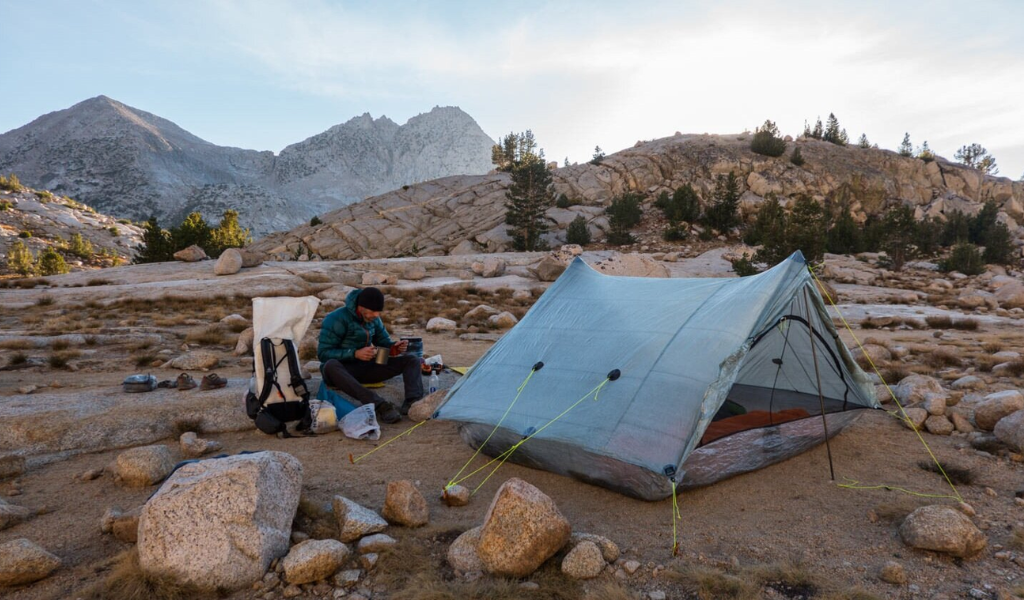
Then, work on making the big 3 items lighter: your shelter, backpack, and sleeping bag. Switching these out for more lightweight options is the best way to reduce weight, especially when you’re a new backpacker. This way, you could easily cut down 10 pounds or more and have an extra light backpacking setup.
2. Choose clothes
The clothes you pack change depending on where you’re going, but the basics stay the same. Clothes that dry fast and take sweat away from your skin are best. They help you stay comfy, whether it’s hot or cold.
Materials like nylon, polyester, wool, and others are also good choices. Don’t pick cotton – it soaks up moisture and stays wet, which gives you problems like blisters.
Besides, choose clothes that you can wear in layers.
Fleece and goose-down are truly good at keeping you warm without being heavy.
Finally, rain gear should be lightweight, breathable, and waterproof.
3. Plan your meals
Having good food gives you more energy and joy, so take time to prepare your meals before you go – it’s also a crucial step in planning a backpacking trip.
A notable thing is keeping your food as light as possible. Most skilled backpackers pick foods that are light but have lots of calories. They should also be easy to prepare. Packaged freeze-dried meals and snacks are good. Yet, they have lots of salt and sugar, which might not be great if you eat too much.
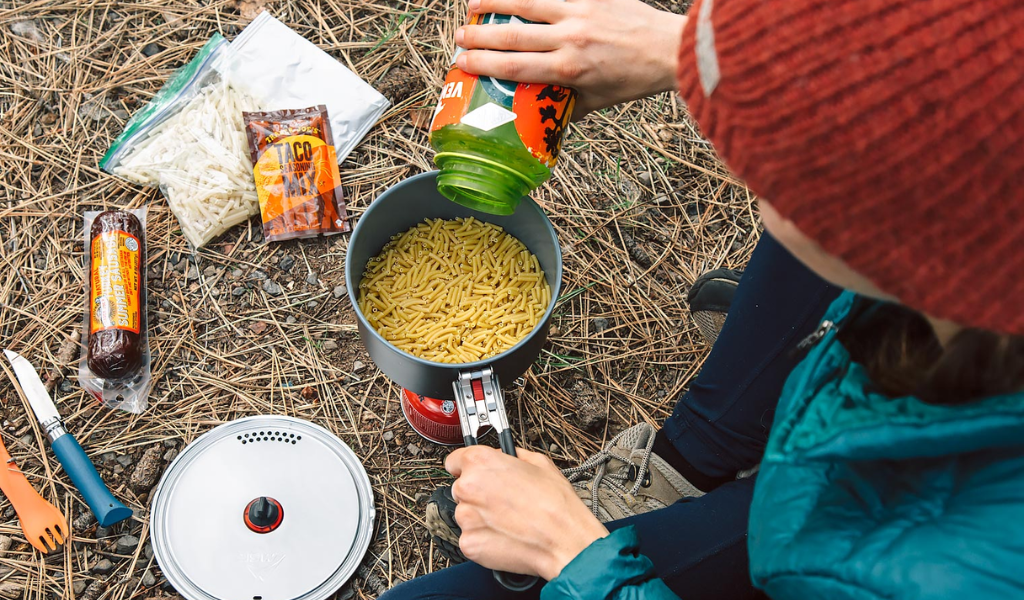
Another way is making your backpacking meals. To start, use a machine to dry meats, fruits, veggies, and sauces. Then, mix them with spices and quick-cooking foods like pasta, rice, and beans.
This option takes more time, and you’ll carry more weight, but it will save money and be healthier for long trips. So, it’s time to practice by making a meal plan for your 3-day backpacking list!
4. Secure fragile items
When getting ready for your backpacking adventure, you must be extra careful with fragile items, especially when they are rental gear. These include cameras, electronics, glass containers, etc.
To keep them safe, put them in the middle of your backpack and wrap them up with soft materials or protective cases. What if it rains unexpectedly? Use waterproof bags to keep water out.
You can also write “fragile” on your backpack to remember to be gentle.
In case something fragile is too big for your backpack, tie it securely on the outside. Just ensure it doesn’t swing around.
5. Distribute weight evenly
Packing your backpack for a hiking trip is not just about what you put inside – it’s also about how you arrange things. One expert trick is to distribute the weight evenly throughout your backpack.
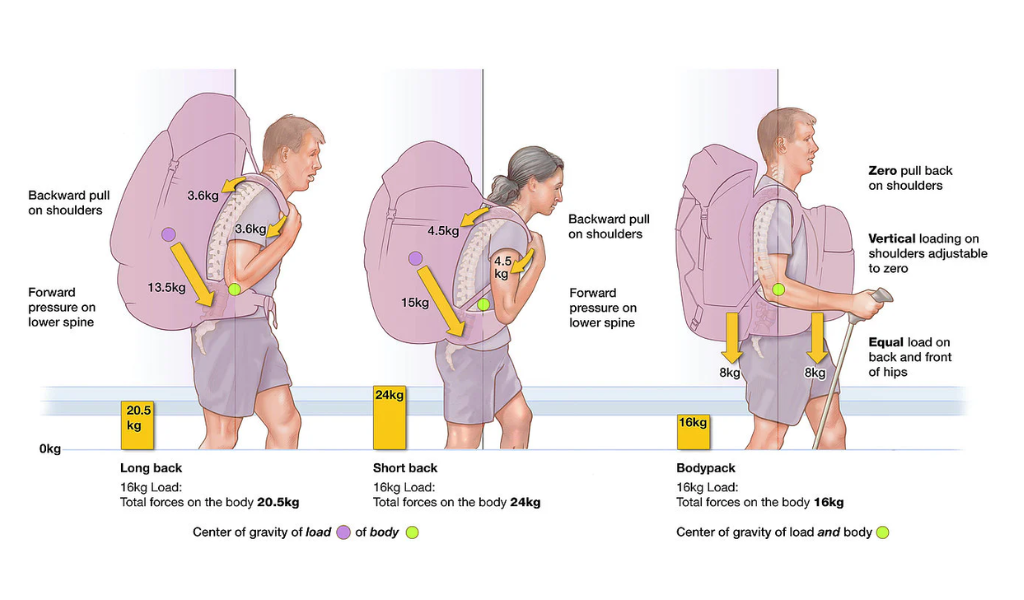
When walking on the trail, your body wants to be balanced. A backpack that is packed unevenly can strain your muscles and make your back, shoulders, or hips hurt. It even throws off your balance and makes you stumble more. But when the weight is spread out evenly, it’s like having a well-balanced backpack buddy that makes hiking much easier on your body.
Start by putting the heaviest items at the center of your backpack, close to your back. This tip keeps the weight close to your body’s center of gravity, which is around your hips. It helps you feel more stable and balanced.
Then, try to put lighter items on the sides and top of your bag. Place long items like a tent or a sleeping pad vertically along the sides.
Finally, your backpack won’t pull you to one side or the other.
See more: How To Pack Luggage For International Flights?
The Bottom Line
In conclusion, backpacking is a rewarding and fun experience for anyone who loves traveling and adventure. However, it requires careful preparation to ensure a safe and enjoyable trip.
We hope this backpacking gear checklist can be a reference for your packing plan. Remember to follow our tips to pack efficiently and effectively for your outdoor trip. And now, gear up for your backpacking trip with the best-selling supplies we’ve rounded up just for you. Happy trails!

